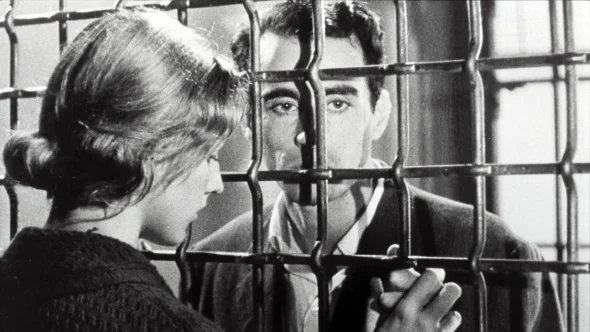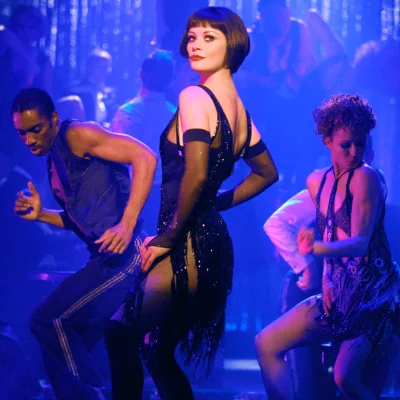
Lila Neugebauer never went to film school. "I don't have formal institutional training in any of the mediums in which I work," she says. "I've had transformative encounters with movies since I was a little kid, but it took until later in my life, once I was directing plays, to develop more of an investigative gaze while watching film."
Neugebauer came up in the theater, directing Off-Broadway productions of plays by Edward Albee, Sarah DeLappe, and Tracy Letts, before making her Broadway debut directing Kenneth Lonergan's The Wavery Gallery. The production was Tony Award-nominated for Best Revival of a Play, while Elaine May won Best Actress.
Now, she makes her feature debut with Causeway. Jennifer Lawrence stars as Lynsey, an Army veteran who suffers a traumatic brain injury while deployed in Afghanistan and, after being discharged, struggles to readjust to life back home. When she forms an unlikely connection with a local mechanic, James (Brian Tyree Henry), they both discover a path toward healing. "I was drawn to the cinematic proposition that the primary transformations in a film would transpire internally — inside the characters," shares Neugebauer. "And to the prospect of tackling the subject matter with depth of feeling, but without melodrama."
"I hope to make films in a range of stylistic registers and scopes," she adds, "but, regardless of style or scale, I suspect I'll always be most interested in what happens inside people, what makes us tick."
In helming her first film, Neugebauer drew upon her theater background in just about every aspect of the filmmaking process, but central to it was the working relationship she developed with her actors. "My collaborations with both Jen and Brian affirmed for me how much can be found in stillness, when working with actors who can access such inner depths and raw feeling in such a restrained, disciplined register." Making the transition from the stage to the screen also had an impact that the director wouldn't comprehend until later.
"In retrospect, it's occurred to me that my work in theater — where the sheer fact of presence and the exchange with the audience are paramount — may have led me to make a film that's this patient, that leaves so much room for the viewer. I think this movie trusts its audience, invites them to draw inferences and fill in blanks, and hopefully even leaves some room for them to sit with themselves," she ruminates. "There's deliberate space for the viewer in this film, and though I wasn’t conscious of this while making the movie, I can see now that may have come from working in a medium in which the form itself is predicated on that exchange."
Below, Neugebauer shares with A.frame five films that left her feeling somehow changed. "This is a collection of movies that stay with me with particular potency — from which images, sounds, characters, moments come to me unexpectedly. They haunt me, you could say?"
Where to Watch: The Criterion Channel
Written and Directed by: Chantal Akerman
I knew almost nothing about Jeanne Dielman before seeing it, and I just about lost my mind when I did. Initially, I couldn't believe the sheer audacity that this kind of painstaking attention would be paid to the domestic minutiae of this seemingly ordinary woman's day. Within three minutes, I was under Akerman's spell. The film's discipline, austerity and use of repetition mesmerized me. To see a film locate such potent feeling and meaning in the smallest quotidian gestures was a revelation. I knew I'd never hear the click of a light switch the same way.
Near the two-hour mark, there's a scene in which Jeanne is peeling potatoes, and she briefly pauses, like maybe she can't go on. I remember, in that moment, suddenly feeling that I was her. By the end of the three hours and 21 minutes, I was exhilarated and crushed by the power of sustained attention and accumulation of detail to achieve such hypnotic effect — and to pull me so completely inside the psyche of a character.

Written and Directed by: Lucrecia Martel
I'm obsessed with all of Martel's films, but La mujer sin cabeza was the first I saw. I've been struck in all of her work by the impression that her compositions — even deceptively simple ones — contain a staggering amount of psychological and emotional communication. In La mujer sin cabeza, the way bodies inhabit frames, are cut off by frames, mysteriously enter and exit, can turn seemingly straightforward images into beautiful and disturbing enigmas. Sound cuts that slip around picture cuts and shifts in locations without conventional context or set up create a destabilizing, unnerving effect. Characters and information are introduced with meticulously deployed ambiguities.
In addition to being a meditation on culpability, the film is also a fierce political allegory. If you look for them, the politics are in every frame, but there's not a trace of didacticism. First watching this movie blew open my conception of how subjectivity can operate in cinematic language, and revisiting it reminds me that films can work on the viewer's subconscious.

Written and Directed by: Hirokazu Kore-eda
I'm endlessly moved by Kore-eda's insights into families — given families, chosen families, families with missing or re-arranged elements. In Still Walking, there's such humanity and sensitivity — but total lack of preciousness — in how he handles the members of this family navigating mourning. I remember being struck by how exquisitely controlled — but also tender, even loving — his filmmaking felt to me when I first saw Still Walking.
There's an elegant restraint in the camerawork, but such warmth in the storytelling. This film made me think about negative space with new awareness. The camera often lingers when someone leaves the frame or waits expectantly before they enter. It felt to me as if he’s leaving room for us to breathe. There's patience in his editorial strategies, a delicately attuned sense of rhythm, but nothing is overstated. To experience total intentionality in such a gentle, understated register thrilled me.

Directed by: Elaine May | Written by: Neil Simon
Is it a black comedy? Satire? It flirts with screwball, even farce… But it's still somehow grounded, like painfully astute social realism as seen through a definitively comic worldview. Elaine May is one of my favorite minds of all time, and I can't think of another movie so full of exchanges I find devastatingly hilarious and genuinely devastating at once.
Jeannie Berlin, Charles Grodin, and Cybill Shepherd's performances are all unforgettable. They're dialed in with such specificity, yet they seem to have just the right amount of room to play. Their body language alone kills me. Re-watching The Heartbreak Kid years after first seeing it, I was struck by the masterful long takes. And Elaine doesn't cut for comedy the way anyone else would; the film's cadence is singularly, idiosyncratically its own.

Written and Directed by: Robert Bresson
Scholars, critics, and filmmakers have probably written so voluminously about Bresson that it's hard to even dare to say a word. But this was the first Bresson movie I ever saw, and I remember being breathless watching it. The economy and precision of the filmmaking felt like an edict: That no shot, no cut, be incidental or inessential. The asceticism of the film, its disinterest in drawing out conventionally prescribed empathy from a viewer, the way music and sound are used, its approach to narrative development, the way it's paced, and the performance registers. The spellbinding unease generated by all of that, and the existential project underpinning it — that viewing was, for me, one sustained 'a movie can do this??' experience.






